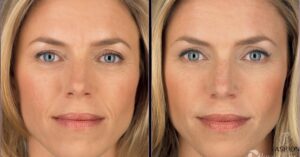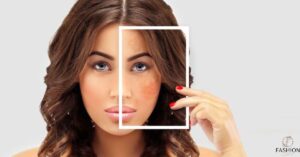Having a time deciding between brow lamination and microblading for enhancing your eyebrows? Both of these treatments come with their advantages so knowing the distinctions, between them is key to getting the perfect brow style you’re, after.
In this guide we will dive into the details of each process examining how they work what results they offer, drawbacks and the care needed afterward. By the conclusion you’ll have all the details to make a informed choice, on which eyebrow treatment suits your tastes and daily routine.
Brow Lamination
What Is Brow Lamination?
Brow lamination is a method of enhancing eyebrows by using a keratin based solution to smooth and reshape the eyebrow hairs.
This contemporary technique assists, in creating a gentle appearance, for the eyebrows by managing unruly hairs and sculpting them based on your desired style.
How Brow Lamination Works
To begin brow lamination the first step is to apply a keratin solution to your eyebrows, which works to soften the hair layer. Next the eyebrows are fixed into your style using a neutralizing solution.

To enhance the fullness of the brows, a brow mascara or tint can be applied. This treatment usually remains effective, for 6 to 8 weeks before needing a refresh.
Side Effects of Brow Lamination
Although brow lamination is commonly viewed as a treatment there are a possible outcomes such, as temporary redness, itching or irritation, in the treated region.
If you have skin or allergies, to any of the lamination solution ingredients it’s important to skip the treatment. Fortunately most individuals don’t face any reactions and any side effects that do occur are usually mild and brief.
Related Post: Lift vs Lash Perm: Which One Is Better?
Microblading vs. Brow Lamination
Lamination involves reshaping your natural brow hairs whereas microblading’s a semi permanent tattoo method that enhances the look of fuller and more defined brows by implanting pigment into the skin.
Both methods vary significantly. They both have the potential to improve the look of your eyebrows.
What Is Microblading?

Microblading is a technique, in the realm of tattooing that employs a device to insert pigment into the skin.
This technique creates fine, hair-like strokes that mimic the appearance of natural brow hairs, effectively filling in sparse areas and adding fullness to your eyebrows.
How Microblading Works
Throughout the microblading procedure an expert utilizes a pen to create delicate sharp strokes that mimic natural eyebrow hairs. The color is implanted into the dermis the skins layer, producing effects that may endure for 1 to 3 years before diminishing.
The first step typically lasts around 2 to 3 hours followed by a follow up session in about 4 to 6 weeks for outcomes.
Side Effects Of Microblading
Side effects that may occur from microblading could involve redness, swelling, bruising and allergic reactions, to the pigments employed. It is essential to follow treatment care to avoid any infections or pigment related issues.
People who are prone to keloid scarring or have specific skin conditions might not be candidates, for microblading. It’s crucial to select an trustworthy technician to reduce any risks.
How To Choose Between Them

When deciding between brow lamination and microblading it’s important to think about your preferences, lifestyle and desired outcome. Both procedures require maintenance. Offer results.
Benefits of Microblading
Microblading comes with advantages such, as lasting results that can stay fresh for 1 to 3 years when maintained with touch ups creating looking hair like strokes for fuller eyebrows and enhancing fullness and definition for thin or overly plucked brows.
Furthermore microblading offers a deal of flexibility when it comes to shaping, coloring and adjusting hair density enabling you to achieve the look you desire.
Microblading Aftercare
Following a microblading session it’s essential to adhere to the recommended aftercare guidelines, for healing and to prevent any issues. This involves refraining from contact, with water, sweating and applying makeup for a period of 7 10 days post procedure.
It’s important to clean the area and apply the ointment as instructed by your technician. You’ll likely need touch ups to keep the desired results since the pigment tends to fade over time.
Microblading Before and After
The photos before. After show how microblading can make a difference.
Sparse and irregular eyebrows are expertly enhanced with strokes that mimic hair resulting in a well defined look that enhances your facial features and boosts your confidence.
Benefits of Brow Lamination
Brow lamination conversely offers an gentle way to elevate the appearance of your eyebrows. It’s ideal, for individuals desiring a voluminous look, without the long term obligation of a semi permanent procedure.
The procedure helps tame hairs. Keeps them in shape for as long, as 8 weeks resulting in instantly achieving thicker, softer and better defined eyebrows.
Brow Lamination Aftercare
Aftercare for brow lamination is relatively simple compared to microblading. You’ll need to avoid water and sweating for 24-48 hours after the treatment, but you can use brow makeup and products as usual afterward.
Redoing the lamination process every 4-8 weeks is recommended as your hairs regrow and the effects gradually wear off.
Brow Lamination Before and After
The before and after photos showcase the dramatic yet temporary transformation achieved with brow lamination.
Unruly, sparse brows are instantly tamed and reshaped, creating a full, fluffy appearance that can last for several weeks with proper touch-ups.
Brow Lamination Process
Here’s a quick overview of the brow lamination process:
- Your eyebrow hairs are carefully. Styled to achieve your look.
- A keratin-based solution is applied to break down the hair’s cuticle.
- A neutralizing product is used to set the brow shape in place.
- A brow dye or mascara is used to boost the appearance of brows.
Conclusion
Both brow lamination and microblading can give you brows but they achieve this in different ways and come with different levels of commitment. Microblading involves creating semihair like strokes whereas lamination temporarily reshapes your natural brows. When choosing between the two options think about what results you want how upkeep you’re willing to do and your lifestyle to pick the brow treatment that fits you best.
For those seeking brows and are open, to the semi permanent aspect and upkeep demands microblading might be the ideal choice. On the hand if you lean towards a fix, with little downtime and aftercare needed brow lamination could suit you better.
In the end both methods can give you lovely brows if done by an expert. Conduct research seek advice, from professionals and decide wisely according to your preferences and objectives.
How long do the results of brow lamination last?
The effects of brow lamination usually endure for about 4 to 8 weeks before requiring a follow up session.
Is microblading painful?
Microblading may lead to discomfort. Typically a numbing cream is applied topically to reduce pain throughout the process.
Can I get brow lamination if I have sensitive skin?
Its recommended to steer of brow lamination if you have sensitive skin or have allergies, to the ingredients utilized as it could lead to irritation.
How long does the microblading process take?
The complete microblading procedure, from the session to the follow up appointment, after 4 6 weeks usually lasts 2 3 hours.
Do I need to let my brows heal between lamination appointments?
Yes you can redo brow lamination once the effects, from the treatment fade every 4 8 weeks.
How long does the microbladed pigment last?
After some tuning the pigmentation, from microblading can maintain its quality, for 1 3 years before showing signs of fading.
Can brow lamination be combined with other brow treatments?
Sure you can have your eyebrows laminated while also getting them tinted, waxed or threaded for grooming.











